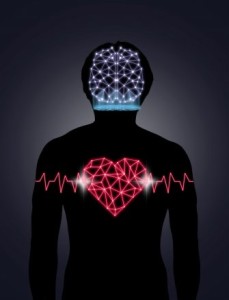Peace at the Table
Peace at the Table
Can a vegetarian and a carnivore agree in the kitchen? Add a little respect
and garnish with understanding, and eating in harmony may not
be as challenging as it seems.
By Susan Weiner, Energy Times
When you met him, Cupid’s arrow struck. Handsome, intelligent and well-traveled, he shared your fundamental understanding of life. More importantly, he laughed at your jokes. It was a heavenly match sealed over red wine in a lakeside restaurant on a warm summer night. There was just one caveat: As a lifelong vegetarian you were gazing longingly into the eyes of an avid meat eater.
This scenario is becoming increasingly common. Whether for health, principle or simply the desire to save money, many people are cutting down on—or eliminating—their meat intake. In what is still an overwhelmingly omnivorous country, however, that trend can lead to kitchen conflicts in families (or families to be).
It’s hard to argue with the health benefits of a produce-powered diet. In one study comparing low-carb diets based on either animal products or vegetables, the veggie lovers had lower rates of hypertension, coronary heart disease, diabetes and LDL cholesterol along with decreased risks of colon and breast cancer, and lower overall death rates (Annals of Internal Medicine 9/10).
Sustainable Choices
Sara Moulton, a chef who showcases both meats and vegetables in her recipes, is frustrated by a lack of vegetable-based fare at many eateries. “Let’s face it. Eating meat is easier,” says the sustainability-minded Moulton, a cookbook author and Food Network veteran (www.saramoulton.com). In her latest book, Sara Moulton’s Everyday Family Dinners (Simon & Schuster), she includes suggestions on how to make any recipe vegetarian. “I was trying to get away from the slab of meat, the piles of starch and the vegetable. I tried to use meat more as a flavoring,” she explains.
Moulton was a vegetarian in college because she could only afford vegetables and grains. Now, as family cook for her husband and two children, “I eat some meat every so often and poultry,” she says. “I am a huge fan of fish and eat that as often as I can. At home, I am trying to cut down on the meat portions for the whole family, and I will often use it as a flavoring, not as the center of the plate. We probably eat vegetarian once a week.” At home, Moulton doesn’t believe in preparing special meals for picky eaters. She made a point of exposing her kids to foreign cuisine when they traveled. “Everybody’s palate has to grow up,” she says.
Still, each member of the Moulton family has food preferences that Moulton manages to accommodate by “bulking up the vegetables. My son likes meat and starch, my daughter likes some meat and lots of vegetables, and my husband will eat anything, so I just make sure there are lots of choices, especially in the vegetable category,” Moulton says. “At home, I always make sure we have plenty of options around. I don’t believe in forcing anyone to eat what they don’t want.” That same easygoing attitude towards menu-planning can help defuse tensions in a family where not everyone eats meat.
The Reeder family has pondered the significance of food choices ever since five-year-old Olivia introduced her vegan friend as a “meat orphan.” “And thus began the meat versus non-meat discussions in our home,” recalls Diane Reeder, chef and executive director of The Queens Galley Food Insecurity Resource Center in Kingston, New York, an educational center and soup kitchen serving over 9,000 chef-prepared meals each month (www.queensgalley.org).
“The balance we strike is not a choice between having meat or not, but rather making a determined effort to buy meat that is raised humanely with as little impact on the environment as possible. I buy meat when I know the name of the farmer that raised it,” Reeder says. “It does cost significantly more, so we purchase smaller amounts. When meat is raised with care and respect for the animal, that transfers to our plates.”
Tricia Barry agrees. As communications director at Farm Sanctuary, a group working to change the way society treats animals (www.farmsanctuary.org), Barry went from meat eater to vegan when she learned about how commercial livestock are raised.
“Animals raised on today’s industrialized farms are crowded in factory farm warehouses and confined so tightly that they cannot walk, turn around or lie down comfortably,” notes Barry. According to a 2006 United Nations report, animal agriculture contaminates soil, damages crops, pollutes lakes and rivers with waste runoff and pathogens, and releases greenhouse gases.
Talking About Eating
Troubled by the poor quality of mass-produced food, Reeder teaches a class in which she takes students shopping. “It’s literally an aisle-by-aisle walk through the various departments, pointing out the pitfalls, myths and mysteries in the supermarket,” explains Reeder. “The bonus points come when you start to look at the things in your cart and decide not to buy chicken that is neon yellow and ‘enhanced’ by a seasoned broth.” If you are the vegetarian in your family, taking such a tour can spark a discussion that will allow other family members to make informed choices about their eating habits.
While Barry’s husband, Ian, is a flexitarian—someone who consumes fish or meat on occasion—the family maintains a vegan kitchen. “Within our household, we agree to eat vegan and I only cook vegan,” says Barry. “Our child has been raised a vegan thus far. However, I know that as he grows, he will come to his own decisions and I will respect that.”
With compassion and understanding, Barry believes meat-eaters and vegans can dine in harmony. “It’s a bit unrealistic to assume that whichever person one plans to be in a relationship with will share all of your ethics, beliefs and habits,” says Barry. “I think for the sake of a healthy relationship, though, it helps to find someone who values one’s choice to be vegan. My husband has always respected my decision to be vegan. He sees it as a more compassionate way to live.”
As far as Heidi Skolnik is concerned, vegetarians and meat eaters living harmoniously under the same roof is a no-brainer. “Where is the conflict?” asks Skolnik, MS, a certified dietician nutritionist and president of Nutrition Conditioning, a nutrition consulting practice serving the greater New York metropolitan area (www.nutritionconditioning.net). “As long as the vegetarian allows the meat eater to eat meat, and the meat eater is willing to eat vegetarian options, what’s the big deal?”
With so many aspects to a meal—salad, soup, vegetable, starch, appetizer—protein compromise is easy, says Skolnik. “The meat eater can have chicken or beef for an entrée, the vegetarian can eat tofu or beans. Instead of having a chicken noodle soup for a starter, you can have a lentil soup,” suggests Skolnik, who has provided nutrition counseling to the New York Mets and the Juilliard School of Music. When children opt to go vegetarian or vegan, says Skolnik, shop for books or take a cooking class together. “You need to help ensure they’re nutritionally balanced and support them in their choices.”
Your new husband hasn’t given up his carnivorous ways. However, he does eat the vegetarian meals you prepare. What’s more, he has begun experimenting in the kitchen with vegetables, grains, meat substitutes and spices, and has switched to reduced portions of mostly organic, free-range meat. You haven’t imposed your food preferences on him—but life in the kitchen is peaceful for both of you.


